The Hobie 33 is a 33.0ft fractional sloop designed by Hobie Alter & Phil Edwards and built in fiberglass by Hobie Cat between 1982 and 1987.
187 units have been built..
The Hobie 33 is an ultralight sailboat which is a very high performer. It is very stable / stiff and has a low righting capability if capsized. It is best suited as a racing boat.
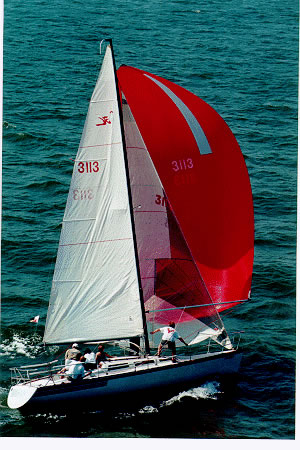

Hobie 33 for sale elsewhere on the web:

Main features
| Model | Hobie 33 | ||
| Length | 33 ft | ||
| Beam | 8 ft | ||
| Draft | 1.83 ft | ||
| Country | United states (North America) | ||
| Estimated price | $ 0 | ?? |
Login or register to personnalize this screen.
You will be able to pin external links of your choice.

See how Sailboatlab works in video
| Sail area / displ. | 27.25 | ||
| Ballast / displ. | 47.50 % | ||
| Displ. / length | 62.94 | ||
| Comfort ratio | 12.39 | ||
| Capsize | 2.02 |
| Hull type | Monohull lifting keel | ||
| Construction | Fiberglass | ||
| Waterline length | 30.50 ft | ||
| Maximum draft | 5.50 ft | ||
| Displacement | 4000 lbs | ||
| Ballast | 1900 lbs | ||
| Hull speed | 7.40 knots |

We help you build your own hydraulic steering system - Lecomble & Schmitt
| Rigging | Fractional Sloop | ||
| Sail area (100%) | 428 sq.ft | ||
| Air draft | 41 ft | ||
| Sail area fore | 209.75 sq.ft | ||
| Sail area main | 219.56 sq.ft | ||
| I | 33.83 ft | ||
| J | 12.40 ft | ||
| P | 35.13 ft | ||
| E | 12.50 ft |
| Nb engines | 1 | ||
| Total power | 0 HP | ||
| Fuel capacity | 0 gals |
Accommodations
| Water capacity | 0 gals | ||
| Headroom | 0 ft | ||
| Nb of cabins | 0 | ||
| Nb of berths | 0 | ||
| Nb heads | 0 |
Builder data
| Builder | Hobie Cat | ||
| Designer | Hobie Alter & Phil Edwards | ||
| First built | 1982 | ||
| Last built | 1987 | ||
| Number built | 187 |
Other photos
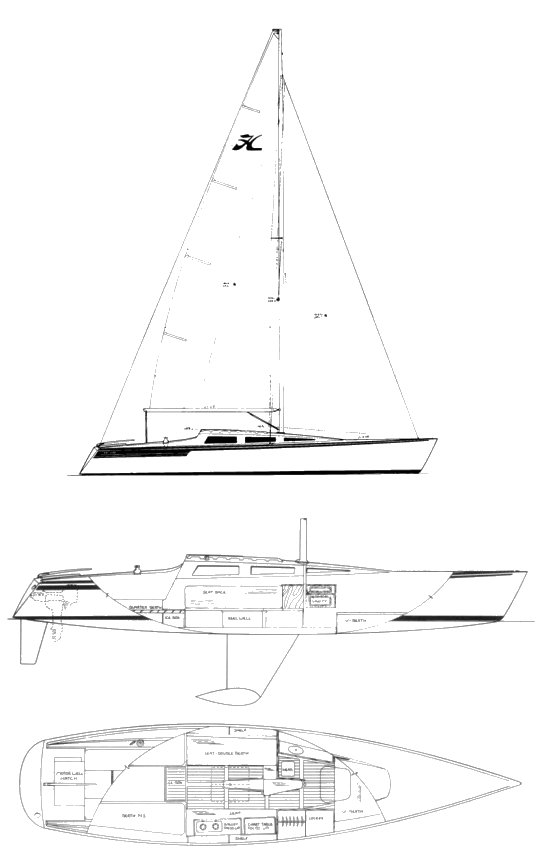
Modal Title
The content of your modal.
Personalize your sailboat data sheet
Sailboat specifications
- Last update: 17th March 2020
Hobie 33's main features
Hobie 33's main dimensions, hobie 33's rig and sails, hobie 33's performances, hobie 33's auxiliary engine, hobie 33's accommodations and layout.

Similar sailboats that may interest you:
- New Sailboats
- Sailboats 21-30ft
- Sailboats 31-35ft
- Sailboats 36-40ft
- Sailboats Over 40ft
- Sailboats Under 21feet
- used_sailboats
- Apps and Computer Programs
- Communications
- Fishfinders
- Handheld Electronics
- Plotters MFDS Rradar
- Wind, Speed & Depth Instruments
- Anchoring Mooring
- Running Rigging
- Sails Canvas
- Standing Rigging
- Diesel Engines
- Off Grid Energy
- Cleaning Waxing
- DIY Projects
- Repair, Tools & Materials
- Spare Parts
- Tools & Gadgets
- Cabin Comfort
- Ventilation
- Footwear Apparel
- Foul Weather Gear
- Mailport & PS Advisor
- Inside Practical Sailor Blog
- Activate My Web Access
- Reset Password
- Customer Service

- Free Newsletter

Marshall Sanderling 18: Used Boat Review

Affordable Cruising Sailboats, Continued

Maine Cat 41 Used Boat Review

CS 30 Used Boat Review

Best Crimpers and Strippers for Fixing Marine Electrical Connectors

Thinking Through a Solar Power Installation

How Does the Gulf Stream Influence our Weather?

Can You Run a Marine Air-Conditioner on Battery Power?

Need a New Headsail Furler? Here’s What’s Involved

Master the Sailing Basics: Never Stop Learning the Little Things

How to Mount Your Camera on Deck: Record Your Adventures with…

Un-Stepping the Mast for America’s Great Loop

Sinking? Check Your Stuffing Box

The Rain Catcher’s Guide

How to Change Your Engine Mounts
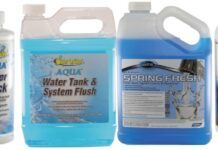
Keeping Water Clean and Fresh

Vinyl Boat Lettering DIY Application and Repair

Those Extras you Don’t Need But Love to Have

Three-Model BBQ Test

Alcohol Stoves— Swan Song or Rebirth?

UV Clothing: Is It Worth the Hype?

Preparing Yourself for Solo Sailing

How to Select Crew for a Passage or Delivery

Preparing A Boat to Sail Solo

Dear Readers

Chafe Protection for Dock Lines

Waxing and Polishing Your Boat

Reducing Engine Room Noise

Tricks and Tips to Forming Do-it-yourself Rigging Terminals
- Sailboat Reviews
Express 34, Hobie 33, Olson 34
Three of the best from the west, these performance sloops have been out of production for 15 years but are still hot because theyre not only fast, but built well enough for blue-water sailing..
Nearly everyone involved in the boating industry during the prosperity of the 1970s also has a vivid recollection of the 1980s, when the industry stood on the brink of implosion. Old-line builders like ODay, Cal, Ericson and Pearson went the way of T-Rex; others endured losses for several years before returning to profitability in the mid-1990s. A sad by-product of that debacle is that molds for three of the finest boats produced on the West Coast are gathering dust in a boatyard in Port Townsend, a storage shed in the San Francisco Bay area, and a warehouse in southern California.
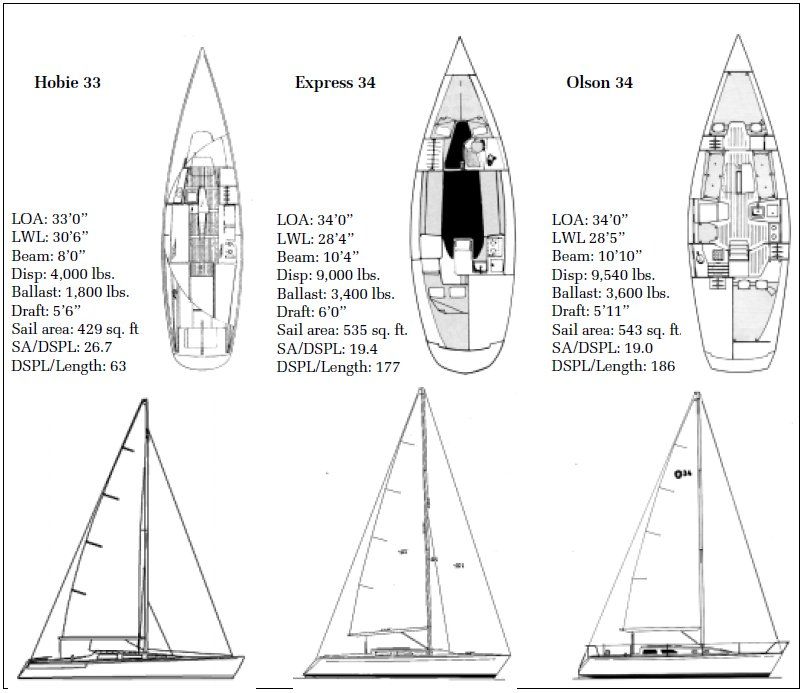
Compared to conventional productions boats of the mid-1980s, the Express 34 and Olson 34 were lighter and faster, but still suitable for distance cruising. The Hobie 33, though most suitable for camper-crusing, was designed to be fast yet trailerable and capable of blue-water sailing. Nearly 20 years after their short-lived production runs, the three are still so popular that finding a used one can be a challenge.
The Designs
The Express 34 was the third Carl Schumacher design produced by Alsberg Brothers Boatworks in Santa Cruz. Schumacher designs have been afloat since the 1970s, ranging in size from 10 to 70 feet. Among Schumachers early designs, his quarter-tonner Summertime Dream won the North American Championships in 1979 and 1980. A current design, the Alerion Express, is one of the sweetest sailing, smartest looking boats weve seen in the last 10 years.

Terry Alsberg, who managed the company, was a graduate of Ron Moores boatbuilding shop, adherents to Bill Lees fast is fun slogan. The company made its first splash in 1984 with the introduction of the Express 27, a pocket racer that enjoyed great success in one-design and MORC competition. Many of the 117 produced are still racing.
The Express 37, a true performance cruiser, was launched in 1984, and 65 were built.
Profits from the sale of the 37 were used to fund the tooling for the Express 34, which was launched in 1986. Though it received Sailing World s Boat of the Year Award, its cost led to the eventual demise of the company.
Brokers told us that we needed to have more accommodations belowdecks than the 37 – cruiser add- ons that increased the price, remembers Schumacher. We ended up with a lot of Express 37 features in a 34-foot boat.
Since it was easy to use the same raw materials as were used on the Express 37, the laminates became heavier, and more expensive. The final boat was about 1,000 pounds heavier than my design, Schumacher adds. Boat were priced at $80,000, only $15,000 less than the 37.
Eventually, faced with high production costs, a softening market, and poor financial planning, the company closed its doors in 1988.
Also located in Santa Cruz, Olson Yachts produced five different models under its banner from 1978 to 1986, and the Soverel 33 for a different company.
The most famous of George Olsons designs is the Olson 30, of which 350 were sold. A proven race winner, the Olson 30 is still active in onedesign fleets in many major sailing ports.
In response to a market craving a MORC racer with a modicum of creature comforts, the company also produced 250 25-footers.
Of the 34s genesis, Olson says, We then decided that the 34 would fill a niche for a larger racer- cruiser, we wanted a light to mediweight boat that was easy to sail, would appeal to racers, and double as a family boat. The design featured a moderately angled reverse transom, and elliptical keel and rudder.
Shortly after producing hull #1, however, the company ran into financial trouble and the tooling was sold to Ericson Yachts.
Don Kohlmann, then directing of marketing for Ericson, says We added the Olson to our product line because we wanted a faster, lower-priced boat than the Ericson 35, a cruiser priced $22,000 higher than the Olson.
Ericson Yachts produced 37 Olson 34s, which were priced at $60,000, including sails.
The Hobie 33 was designed by Hobie Alter during the final monthsof his boatbuilding career.
An avid southern California surfer, Alter captured the surfboard market in his teens with the development of lighter, stronger boards. He followed with development of the 14- and 16-foot Hobie one-design catamarans, two of the largest selling boats in industry history.
Eventually selling to the Coleman Company, Alter retained an office and began work on the prototype for his first monohull. Following a pattern of designing easily transported vessels, he produced a strong, fast, 33-footer that, he says, could be launched by my daughter. She was the guinea pig. A video produced by his pal Warren Miller, of ski movie fame, shows the prototype being driven onto a seawall with no damage to hull or keel. The combination of an easily retractable keel and 8 foot beam allowed trailering on any state or federal highway.
The boat was ultimately doomed by a $50,000 price tag and a downturn in the industry. According to Alter, another contributor to the boats demise was its development in a nonmarine, bureaucratic environment, He describes management meetings where I was typically not talking with boat people, but with marketing and accounting types.
The boat was a stepchild for the company, and the retractable keel was expensive to produce. The company eventually built the last boats with a fixed keel.
One Hobie 33 buyer was Dennis Conner, who, says Alter, bought two, stretched them to 37 feet, and used them as prototypes for an Americas Cup boat with a double rudder system.
The boat was in construction from 1982-1986, and 187 were sold; theyre being sailed on all coasts of the continent, and even in Nova Scotia. Theyre especially popular with lake sailors.
Accommodations
The Olson and Express have legitimate cruising interiors, though the Express exudes a racing pedigree.
Freeboard on the Olson is 1 greater than the Express, which creates more interior volume. Headroom is 64″, compared to 61 in the Express.
In his introduction of the boat, Olson said he intended to provide family-oriented accommodations for six adults, with pressurized fresh water, a two burner stove-oven combination, and large ice box with refrigeration as an option. Bulkheads are teak veneer; joinery trim and cabinetry are solid teak.
Olson owners give the interior high marks because it features a head located aft to port, adjacent to an enclosed stateroom with a double berth. Berths in the Olson 34 measure 66″ in the bow and stern; settees amidships measure 62″.
The galley is to starboard, opposite a functional nav station that faces forward. A drop-leaf table in the center of the main saloon provides comfortable seating for 4 to 6 adults.
The configuration of the Express is similar, though owners say a mast concealed in the head is a plus.
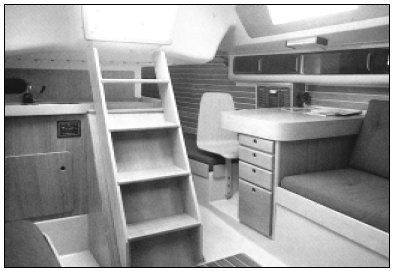
Sleeping quarters for six are in berths measuring 66′ in bow and stern, and settees amidships measuring 64″. Schumacher discovered on an ocean passage that the middle berths are two inches shorter than his design.
As with the 37, the foundation for the V-berth is a fiberglass molding with non-skid so that, with the cushions out, it makes it possible to help the foredeck crew handle sails from down below, he says.
Aft of the V-berth is a hanging locker to port, and head with a shower to starboard. The saloon is furnished with a table that folds off the main bulkhead. The chart table/nav station is to port, the galley to starboard.
A second double berth is located in the port quarter.
By comparison, the Hobie interior reflects the designers intent to trade creature comforts for a trailerable yacht with an 8-foot beam. The interior consists of a narrow area with only 410″ headroom, so performing calisthenics belowdecks is not an option.
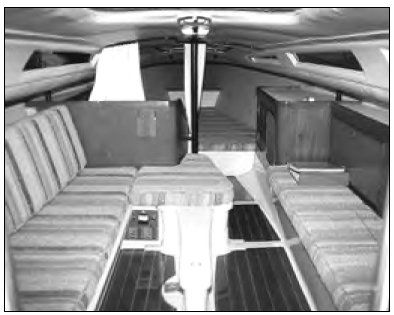
Nonetheless, the designer creatively provided space for amenities necessary for overnighting. The V- berth is situated forward of a half- height bulkhead, and enclosed by a privacy curtain; the berth is 6 feet long and wide enough for two adults. A small space is designated for a porta-potty.Settees provide seating amidships at a table that mounts atop the keel trunk.
An optional two-burner stove is mounted on the inside of a cabinet door. One owner cleverly constructed a mount for a gimbaled butane stove that fits into the channels for the companionway slats. That way we can eat and cook in the cockpit and belowdecks at the same time, he said.
An ice chest at the companionway doubles as a step.
The mature sailor will find accommodations in the Express and Olson more comfortable for distance racing and cruising than the Hobie, which resembles a floating campsite.

Deck Layout
Though original deck layouts may have undergone modifications, all three boats were originally rigged for racing. Deck hardware was provided by name-brand manufacturers like Lewmar and Harken, the exception being custom fittings designed and constructed by Hobie.
The Hobie has a single-spreader rig measuring 354″, the others double spreader rigs. The Olson was produced in two versions; a tall rig designed for light-air sailing is 3 1/2 feet taller than the standard 373″ section. The Express 34 mast is 386″ tall. Wire rigging was the standard on all three boats. Many owners report that the original equipment has not lost its integrity; others have replaced wire with rod rigging. The Olson and Express were equipped with hydraulic backstay adjusters.
Cockpits in the Express and Olson are larger and more user-friendly than the Hobie, especially with a crew of 6 to 8 in racing trim. A common complaint among Hobie owners is that the cockpit seats are too narrow, forcing us to sit on the coaming, which also is too narrow.
Construction
Except for Schumachers meticulous records, exact details of construction schedules have disappeared. Though all of the boats were designed with speed and the PHRF handicap rule in mind, they also were built to sail in stiff breezes and ocean conditions common to the West Coast. Consequently, owners say, hulls, decks, and rigs of 15- to 20-year-old boats have the same structural integrity as when they rolled off the production line.
According to Schumacher, the Express 34s outer laminate consists of 3/4-ounce mat, two layers of 18-ounce co-fab, and 3/4-ounce mat bonded to 3/4-inch thick end-grain balsa, with 18-ounce co-fab on the inside. The deck is similar, except that 3/4-inch balsa core was in the lamination, and unidirectional reinforcements were on the house top and foredeck.
The interior consists of a structural grid with bulkheads bonded into the structure with 18-ounce roving.
Company literature provides a general description of the Olson 34 layup: a one-piece monocoque hull consisted of mat, 18-ounce bi-directional glass and roving, with extra laminate in high-stress areas. Beams constructed of unidirectional roving and woven roving were laminated to reinforce the hull and distribute loads from keel, mast, and engine. Bulkheads and berth tops were bonded to the hull with fiberglass. The original schedule called for a cored hull and deck, however only hull #1 followed that schedule.
Following the sale to Ericson, says Kohlmann, We constructed hulls of hand-laid fiberglass, which produced a heavier boat than designed.
Decks were cored with marinegrade balsa, which one owner described as excellent for mounting gear. Ive never worried about the core compressing when mounting deck hardware.
Hobie Alters recollection is that the Hobie 33 hulls were laid up with alternating layers of fiberglass around a 3/4-inch urethane foam coring.
Considering the industrys historic inability to prevent osmotic blisters, its surprising that the Olson 34 was sold with a five-year guarantee against blistering. Owners of Express and Hobie yachts report few blistering problems. One owner said his blistering required a few bucks and aweekend of sanding and filling.
Performance
All three boats receive high marks from owners who sail them in the ocean, on both coasts, around the buoys, and on lakes. Since they share a common handicap in many areas, the trio frequently goes head to head on the race course.
Bruce Nesbit, who raced his Olson 34 from San Francisco to Hawaii in the Singlehanded TransPac, managed the passage in 13 days, 18 hours. He finished second in his division, fourth overall.
I had the wind on the nose for two days, cracked off and set the spinnaker on day three, then switched to a reefed main and double headsails, he says. Winds were around 15 knots until the last five days, when they piped up into the 20s.
With that sail configuration the Autohelm steered the boat, and I averaged 10 knots for one 24-hour period. It was easy.
Olson owners say the boat performs best in windspeeds below 15 knots, and sails surprisingly well in 5 knots of breeze. The Express is faster on all points of sail in more than 20 knots of wind, one Olson owner says.
However, when sailing to weather the Express must be kept on her feet with bodies on the windward rail, or reduced sail.
It takes a good main trimmer to balance the boat, or the helm will load up, says one owner, a former 505 dinghy racer.
Shes stable off the breeze, as well, and shows good motion in heavy seas, partially because of her large rudder, adds a racer from San Francisco.
Because she displaces only 4,000 pounds, 1,800 in a bulbed keel, the Hobie suffers when sailing to weather in a chop. Mountain lake sailors rate her an A-plus sailing on flat water, and shes a screamer on a close reach.
Shes tender, but with a full crew on the rail and balanced traveler, she is well-mannered, one owner says.
It took a long time to learn to feather the main when sailing to weather, a veteran racer says. Do that and shell squirt uphill. I used to sail with a reef in the main, and the #2 jib. Now I sail with a full main and #4. In heavy winds we simply ease the main.
Express and Olson owners agree that off the wind in a blow the Hobie will leave them in her wake.
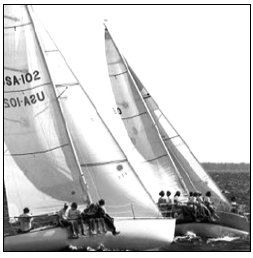
The harder it blows, the better she likes it, says a Hobie owner who completed the 380-mile San Francisco- Santa Barbara race in 35 hours. We hit 25 knots on the speedo. The only boat that beat us to the finish was a J- 130. Plus, I can singlehand it on an ocean race, or take my stepdaughter on a day-sail.
Conclusions
The common denominators of these three boats are curb appeal, performance, strong hulls, good rigging and good deck gear. The Olson and Express have an advantage sailing to weather, and more comfortable accommodations. By comparison, the Hobie will be 8-10 knots faster on a downwind reach, is trailerable, and costs half as much as the competition.
The Olson and Express sell for 85% to 90% of their original price; the Olson in the mid-$50,000 range, the Express from $60,000-$80,000. A barebones Hobie sells for $13,000-$15,000; however, add the cost of new sails, a trailer, and an 8-10 horsepower outboard, and the price jumps to between $22,000 and $25,000.
Its too bad more of these all-around performers werent built.
On the Hobie 33
Weve withstood 45-50 knots on the nose for 8 hours in a large seaway – 12-20 foot waves. Not fun, but not dangerous.
– Owner, Nova Scotia
Unlike some boats, the bow comes up out of a wave. But it will heel. Downsize sails early.
– Owner, Northern California
Took 12-15 foot seas from Bahamas to Florida. Fifty miles in three hours. No problems!
-Owner, Florida
The motor retracts into a transom well, with a hull plug that drops into place to reduce underwater drag.
-Owner, Austin, Texas
The flat bottom tends to pound in heavy seas.
-Owner, Chesapeake
On the Express 34
This is a lot of boat in a small package. I find her easy to doublehand but at times a handful. Ive had this boat going as fast as 19 knots surfing outside the Golden Gate.
-Owner, Santa Cruz
If you want a boat that is cleverly laid out and very functional this is the boat for you. However, its not fancy, and the head and galley are small. With its nicely shaped and large rudder (elliptical) you always feel in control.
-Owner, Sacramento
We lived aboard for 18 months and enjoyed our time there.
-Owner, Los Angeles
My wife loved the interior. Performance was my main deciding factor.
-Owner, San Francisco
On the Olson 34
I have a friend who has an Express 34. We used to moor right next to each other, so he sailed on my Olson 34, and I sailed on his Express 34. We concluded that: 1. If youre looking for a racing boat and don’t mind the open interior layout of the Express 34, its a faster boat-especially off the wind. Its noisier and rougher under power, but lighter and faster under sail. 2. If youre looking for a boat that you can cruise with two couples and still have a lot of fun on the race course, the Olson 34 is probably your best bet. The interior is nicer than the Express, and I especially like the aft head arrangement in the Olson. However, it does come at the cost of some sailing performance-especially off the wind.
-Owner, Portland, Oregon
I have crossed to Hawaii twice with this boat. We have carried spinnakers up to 30 kts of breeze with really good results after converting to a new Schumacher rudder and Harken bearings. The boat has landed on its side about three times and come out unscathed. The deeper rudder and new bearings improve the boat control in a big following sea.
They put in a double sink to attract the ladies. Not good because you need more counter space. I put in a single sink. They advertised the boat as having a 30-gallon water tank, but it was really 20 gallons.
My wife and I sailed from Hawaii to San Francisco in 19 days and motored for only 20 hours. The rest of the time the boat sailed herself. The vane steered while we played dominoes.
RELATED ARTICLES MORE FROM AUTHOR
Leave a reply cancel reply.
Log in to leave a comment
Latest Videos

Pearson 37 & 37-2 – Behind the Curtain

How To Test a Boat Engine

Hunter Legend 35.5 – Behind the Curtain

Whipping Line On Your Sailboat
Latest sailboat review.

- Privacy Policy
- Do Not Sell My Personal Information
- Online Account Activation
- Privacy Manager

Project List and Cost Summary: 1986 Hobie 33 $23,000 New racing sails $9,100 Carbon bowsprit $1,510 Bowsprit fasteners $200 Drill bit and bolts $30 Faired and smoothed keel and hull $3,625 Single braid lifelines $140 Nonskid deck paint $140 Painting supplies $50 Retrofit less sails $5,695 (25% of purchase price) Total retrofit cost $14,795 (65% of purchase price) Grand total $37,796
Resources Pachena, 206-306-2222, www.kiwigrip.com ; New England Ropes, 508-678-8200, www.neropes.com ; North Sails, www.northsails.com ; Selden Mast, 843-760-6278, www.seldenmast.com ; Waterline Systems, 401-682-1661, www.waterlinesystems.com
Also in Retrofits
- RETROFITS: Bristol 32
- RETROFITS: Manta 42 MkII
- RETROFITS: Catalina 36 MkII
- Our annual guide to retrofitting
- Marshall 22 Catboat
- Swan 46 MK I
- Bayfield 25
- Beneteau Oceanis 430
Also from Rich Evans
- Apple Watch apps
- B and G remote controller
- Logbook 3.6
- Boat Watch Pro
- Thirsty-Mate pump
- Impecca Alert Band
- Puffin Blanket
- The bareboating bible
- A nautical christmas in sailcloth
Great choice! Your favorites are temporarily saved for this session. Sign in to save them permanently, access them on any device, and receive relevant alerts.
- Sailboat Guide
Hobie 33 is a 33 ′ 0 ″ / 10.1 m monohull sailboat designed by Hobie Alter and built by Hobie Cat between 1982 and 1987.

Rig and Sails
Auxilary power, accomodations, calculations.
The theoretical maximum speed that a displacement hull can move efficiently through the water is determined by it's waterline length and displacement. It may be unable to reach this speed if the boat is underpowered or heavily loaded, though it may exceed this speed given enough power. Read more.
Classic hull speed formula:
Hull Speed = 1.34 x √LWL
Max Speed/Length ratio = 8.26 ÷ Displacement/Length ratio .311 Hull Speed = Max Speed/Length ratio x √LWL
Sail Area / Displacement Ratio
A measure of the power of the sails relative to the weight of the boat. The higher the number, the higher the performance, but the harder the boat will be to handle. This ratio is a "non-dimensional" value that facilitates comparisons between boats of different types and sizes. Read more.
SA/D = SA ÷ (D ÷ 64) 2/3
- SA : Sail area in square feet, derived by adding the mainsail area to 100% of the foretriangle area (the lateral area above the deck between the mast and the forestay).
- D : Displacement in pounds.
Ballast / Displacement Ratio
A measure of the stability of a boat's hull that suggests how well a monohull will stand up to its sails. The ballast displacement ratio indicates how much of the weight of a boat is placed for maximum stability against capsizing and is an indicator of stiffness and resistance to capsize.
Ballast / Displacement * 100
Displacement / Length Ratio
A measure of the weight of the boat relative to it's length at the waterline. The higher a boat’s D/L ratio, the more easily it will carry a load and the more comfortable its motion will be. The lower a boat's ratio is, the less power it takes to drive the boat to its nominal hull speed or beyond. Read more.
D/L = (D ÷ 2240) ÷ (0.01 x LWL)³
- D: Displacement of the boat in pounds.
- LWL: Waterline length in feet
Comfort Ratio
This ratio assess how quickly and abruptly a boat’s hull reacts to waves in a significant seaway, these being the elements of a boat’s motion most likely to cause seasickness. Read more.
Comfort ratio = D ÷ (.65 x (.7 LWL + .3 LOA) x Beam 1.33 )
- D: Displacement of the boat in pounds
- LOA: Length overall in feet
- Beam: Width of boat at the widest point in feet
Capsize Screening Formula
This formula attempts to indicate whether a given boat might be too wide and light to readily right itself after being overturned in extreme conditions. Read more.
CSV = Beam ÷ ³√(D / 64)
The HOBIE 33 was available with a drop or fixed keel. Designed to be towed on a US street legal trailer.
Embed this page on your own website by copying and pasting this code.
- About Sailboat Guide
©2024 Sea Time Tech, LLC
This site is protected by reCAPTCHA and the Google Privacy Policy and Terms of Service apply.

- Featured Listings
- Beneteau Sailboats
- Excess Catamarans
- Powerboat Listings
- Sailboat Listings
- Catamaran Listings
- Recent Price Drop
- See All Team Members
- Why Hire Team Murray Yacht Sales
- Your Saved Searches
- Ask a Question
Hobie 33 Reviews and more

Hobie 33 North American Championships.
March 26-29, 2015. fort walton yacht club, florida..
https://www.facebook.com/Hobie33NAC2015
http://www.hobie33class.com/ Hobie 33 Owner’s Manual Hobie 33 Documents
USED BOAT REVIEW: HOBIE 33
Hobie Alter’s 33 foot monohull was far ahead of its time, and the reasonable costs of buying and maintaining one make it a great value.
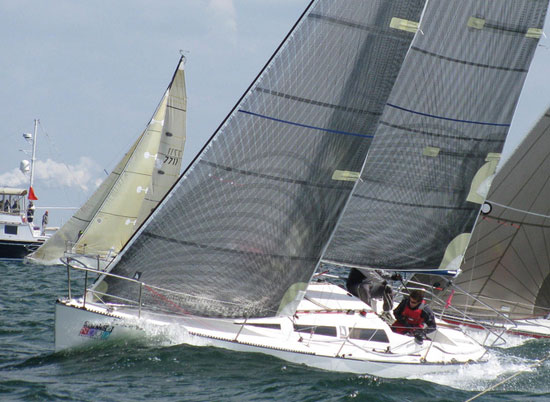

Hobie 33 Polars

- Pingback: Brokerage and Used Sailboat Review Page
Comments are closed.
HOBIE 33 Detailed Review

If you are a boat enthusiast looking to get more information on specs, built, make, etc. of different boats, then here is a complete review of HOBIE 33. Built by Hobie Cat and designed by Hobie Alter, the boat was first built in 1982. It has a hull type of Lifting Keel and LOA is 10.06. Its sail area/displacement ratio 27.25. Its auxiliary power tank, manufactured by undefined, runs on undefined.
HOBIE 33 has retained its value as a result of superior building, a solid reputation, and a devoted owner base. Read on to find out more about HOBIE 33 and decide if it is a fit for your boating needs.
Boat Information
Boat specifications, sail boat calculation, rig and sail specs, contributions, who designed the hobie 33.
HOBIE 33 was designed by Hobie Alter.
Who builds HOBIE 33?
HOBIE 33 is built by Hobie Cat.
When was HOBIE 33 first built?
HOBIE 33 was first built in 1982.
How long is HOBIE 33?
HOBIE 33 is 9.3 m in length.
What is mast height on HOBIE 33?
HOBIE 33 has a mast height of 10.71 m.
Member Boats at HarborMoor
- AROUND THE SAILING WORLD
- BOAT OF THE YEAR
- Email Newsletters
- America’s Cup
- St. Petersburg
- Caribbean Championship
- Boating Safety

- Regatta Series
Hobie 33s Sailing The Test of Time
- By Dave Reed
- March 7, 2022
- More: Helly Hansen Sailing World Regatta Series , Helly Hansen Sailing World Regatta Series St. Petersburg , Sailboats
- More Regatta Series

Widnall Prize Announced for Helly Hansen Sailing World Regatta at Marblehead Race Week

Kaczor’s Tartan 10 Erica Wins Regatta Series Chicago

Distance Racers Play Wind Roulette at Regatta Series Chicago

Thrilling Big-Breeze Start to Regatta Series in Chicago
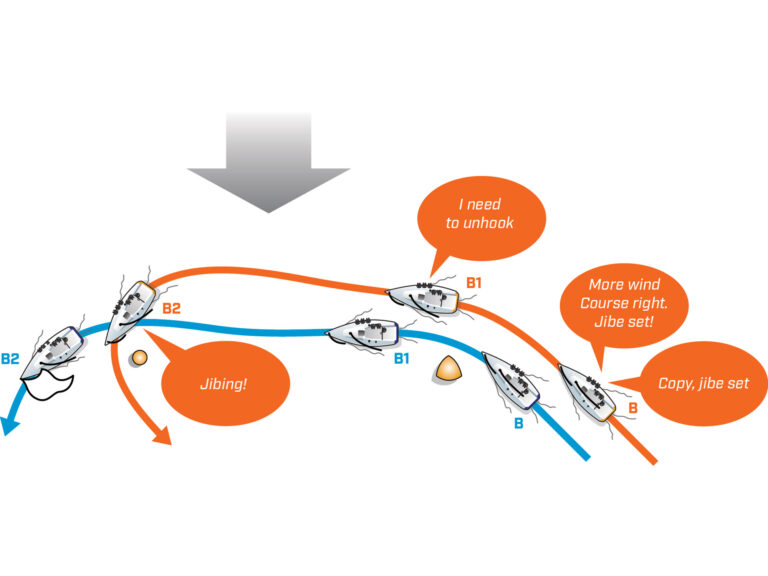
Fundamental Tactics: How To Handoff

The Rise of Harbor 20s In Annapolis

Windmills Plane and Simple

Melges Expands Into Florida with Watersports Center

- Digital Edition
- Customer Service
- Privacy Policy
- Cruising World
- Sailing World
- Salt Water Sportsman
- Sport Fishing
- Wakeboarding
Review of Hobie 33
Basic specs..
The Hobie 33 is equipped with a fin keel. A boat with a fin keel is more manoeuvrable but has less directional stability than a similar boat with a long keel.
The keel is made of lead. Compared with iron, lead has the advantage of being 44% heavier, which allows a smaller keel and hence less water resistance and higher speed.
The boat can enter most marinas as the draft is just about 1.65 - 1.75 meter (5.41 - 5.71 ft) dependent on the load. See immersion rate below.
Sailing characteristics
This section covers widely used rules of thumb to describe the sailing characteristics. Please note that even though the calculations are correct, the interpretation of the results might not be valid for extreme boats.
What is Theoretical Maximum Hull Speed?
The theoretical maximal speed of a displacement boat of this length is 7.4 knots. The term "Theoretical Maximum Hull Speed" is widely used even though a boat can sail faster. The term shall be interpreted as above the theoretical speed a great additional power is necessary for a small gain in speed.
The immersion rate is defined as the weight required to sink the boat a certain level. The immersion rate for Hobie 33 is about 152 kg/cm, alternatively 851 lbs/inch. Meaning: if you load 152 kg cargo on the boat then it will sink 1 cm. Alternatively, if you load 851 lbs cargo on the boat it will sink 1 inch.
Sailing statistics
This section is statistical comparison with similar boats of the same category. The basis of the following statistical computations is our unique database with more than 26,000 different boat types and 350,000 data points.
What is L/B (Length Beam Ratio)?
What is a Ballast Ratio?
Maintenance
When buying anti-fouling bottom paint, it's nice to know how much to buy. The surface of the wet bottom is about 29m 2 (312 ft 2 ). Based on this, your favourite maritime shop can tell you the quantity you need.
Are your sails worn out? You might find your next sail here: Sails for Sale
If you need to renew parts of your running rig and is not quite sure of the dimensions, you may find the estimates computed below useful.
| Usage | Length | Diameter | ||
| Mainsail halyard | 28.0 m | (91.8 feet) | 10 mm | (3/8 inch) |
| Jib/genoa halyard | 28.0 m | (91.8 feet) | 10 mm | (3/8 inch) |
| Spinnaker halyard | 28.0 m | (91.8 feet) | 10 mm | (3/8 inch) |
| Jib sheet | 10.1 m | (33.0 feet) | 12 mm | (1/2 inch) |
| Genoa sheet | 10.1 m | (33.0 feet) | 12 mm | (1/2 inch) |
| Mainsheet | 25.2 m | (82.5 feet) | 12 mm | (1/2 inch) |
| Spinnaker sheet | 22.1 m | (72.6 feet) | 12 mm | (1/2 inch) |
| Cunningham | 3.8 m | (12.5 feet) | 10 mm | (3/8 inch) |
| Kickingstrap | 7.6 m | (25.0 feet) | 10 mm | (3/8 inch) |
| Clew-outhaul | 7.6 m | (25.0 feet) | 10 mm | (3/8 inch) |
This section is reserved boat owner's modifications, improvements, etc. Here you might find (or contribute with) inspiration for your boat.
Do you have changes/improvements you would like to share? Upload a photo and describe what you have done.
We are always looking for new photos. If you can contribute with photos for Hobie 33 it would be a great help.
If you have any comments to the review, improvement suggestions, or the like, feel free to contact us . Criticism helps us to improve.

- Forum Listing
- Marketplace
- Advanced Search
- All Topics Sailing
- Sailboat Racing
- SailNet is a forum community dedicated to Sailing enthusiasts. Come join the discussion about sailing, modifications, classifieds, troubleshooting, repairs, reviews, maintenance, and more!
- Add to quote
Hi, I am interested in the Hobie 33, trying to find information on it though is slightly difficult. Does anybody know where any good reviews of the boat are. The fact that it is trailerable interests me but I am wondering how offshore worthy the boat would be. I guess I'm just looking for any advice or experiences people have had with Hobie 33s. Thanks, Andy
I can't tell you much except that I crewed on a Hobie 33 back when I was a teenager. She surfed well but was as not as good upwind. She sure had a pretty look though!
Try a search on Sailing Anarchy. I've seen lots posted on Hobie 33's there over the years. If you check youtube you can probably also find the video that Hobie Alter and Warren Miller did as a promotional. They dropped the boat and ran it into the rocks trying to break it. There is also a writeup in Practical Boat Buying comparing the Hobie 33 with a few other similar boats of that vintage.
Good boats there are some racing here on the West end of Lake Erie. Built for the Trans-Pac race from the West Coast to Hawaii. Some have lifting keels and some have been Turboed by adding more sail area. Cliff J 29 Turtle Stampede
They are tender and not comfortable in waves. Take your traditional 2500 lb boat, and add 10 feet to the bow. The ends of this boat are So, so light, it pitches back and forth over the waves..but at the same time,it's not slowing down, just going up and over (Screw that displacing water buisness!) This is the boat you want for a crazy downwind far offshore. IMHO, you can get the same experience near shore in an old 505 for a lot less money, and save the money for a heavier boat.
I would give the J 29 a good look, we LOVE our J 29 and have been in some very bad weather 50 knot winds and 10 foot square Lake Erie Waves. We have surfed up to 15 knots for hours. Only boat that I would want that would be bigger is a J 35. Cliff
Hobie's go offshore all of the time. It's the only boat I've seen dropped 10' into the water several times by the builder ON PURPOSE during testing with no damage.
though it sure would speed up boat-launching at those J/22 regattas! :: raise boat 4 inches over trailer :: pull trailer away :: swing boat over water :: NEXT
seeya
I worked at Hobie R&D and helped build all the tooling for the Hobie 33 as well as sail the prototype 33 almost every day. Really neat boat and a blast to sail, and yes, they have done many offshore long distance races and race PHRF on the west coast often. You can sometimes find one for sale but they are still being built in Dana Point, CA. The builder has added the Turbo option of retracting carbon pole and aso chute set up similar to the J Boats design. I am sure you cann get in touch with the builder, Robbie Roberson by contacting Hobie in Oceanside, CA Send me a PM if you need more help on this.
Whenever anyone mentions the Hobie 33 it reminds me of this video, I love this video... YouTube - Hobie 33 Crash Test
- ?
- 175.5K members
Top Contributors this Month
| |||||||||||

IMAGES
VIDEO
COMMENTS
It takes into consideration "reported" sail area, displacement and length at waterline. The higher the number the faster speed prediction for the boat. A cat with a number 0.6 is likely to sail 6kts in 10kts wind, a cat with a number of 0.7 is likely to sail at 7kts in 10kts wind. KSP = (Lwl*SA÷D)^0.5*0.5
The Hobie 33 is a 33.0ft fractional sloop designed by Hobie Alter & Phil Edwards and built in fiberglass by Hobie Cat between 1982 and 1987. 187 units have been built. The Hobie 33 is an ultralight sailboat which is a very high performer. It is very stable / stiff and has a low righting capability if capsized. It is best suited as a racing boat.
The Hobie 33 is a 33'1" (10.1m) racer-cruiser sailboat designed by Hobbart (Hobie) Alter (United States). She was built between 1982 and 1987 by Hobie Cat (United States) with 147 hulls completed. Hobie 33's main features. Model. Hobie 33.
Total sail area. 429.31 sq ft (39.884 m 2) Racing. D-PN. 73.0. [ edit on Wikidata] The Hobie 33 is an American trailerable sailboat that was designed by Hobie Alter and Phil Edwards as one-design racer and first built in 1982. It was the first monohull design for Alter and his company, after establishing their reputations for their lines of ...
The Hobie has a single-spreader rig measuring 354″, the others double spreader rigs. The Olson was produced in two versions; a tall rig designed for light-air sailing is 3 1/2 feet taller than the standard 373″ section. The Express 34 mast is 386″ tall. Wire rigging was the standard on all three boats.
The Hobie 33 is a fantastic boat to sail, especially offwind. Key Features. Design - Light weight (around 4000 lb.), long waterline (30.5'), slender, bulb keel, plenty of sail, not much holding it back. Symmetrical spinnake r - Very versatile, no need for multiple asymmetrical spinnakers. Not old-fashioned on such a light boat.
Hobie 33. 2013 January 4. By Rich Evans. An aging speedster gets go-fast upgrades for family racing. The first production ultralight displacement boats are turning 30 years old, and that means their price is finally down in the ultra-affordable range. I bought a 1986 Hobie 33 in New England for $23,000, dreaming of 20-knot surfs and front-of ...
Hobie 33 is a 33′ 0″ / 10.1 m monohull sailboat designed by Hobie Alter and built by Hobie Cat between 1982 and 1987. Great choice! Your favorites are temporarily saved for this session. ... The HOBIE 33 was available with a drop or fixed keel. Designed to be towed on a US street legal trailer. Suggest Improvements Source: sailboatdata.com ...
In an adjacent slip at St. Petersburg YC is Steven Attard's Hobie 33 Viva Las Vegas. He's the guru of all things Hobie 33. Attard's looks suspiciously newer than Rhumbline and that's ...
I bought a 1986 Hobie 33 in New England for $23,000, dreaming of 20-knot surfs and front-of-the beer-can-fleet finishes, but its ancient sails and knotty foils needed replacement or repair, as well as some other standard old-boat touch-ups. I set two budgets for this project: $5,650 for boat upgrades, like a slippery bottom, and $10,000 for sails.
If you are a boat enthusiast looking to get more information on specs, built, make, etc. of different boats, then here is a complete review of HOBIE 33. Built by Hobie Cat and designed by Hobie Alter, the boat was first built in 1982. It has a hull type of Lifting Keel and LOA is 10.06. Its sail area/displacement ratio 27.25.
The Hobie 33 was Hobie Alter's first foray into monohulls and offshore race boats, and this ultralight racer still enjoys close class racing 40 years later. We check in with Hobie 33 ...
Getting Started. Hobie 33 Documents. Sail Trim Using Telltales. Sailing, Tuning, and Trailering Guide. REGLAGE DES VOILES AVEC PENONS. Learning the Basics. Numéros de série Kayaks / Catamarans. Sailboat Trailering. Sailboat/Kayak Serial Number Location.
The Hobie 33 has been built with more than one type of keel. One option is a fin keel. A boat with a fin keel is more manoeuvrable but has less directional stability than a similar boat with a long keel. ... Sailing characteristics. This section covers widely used rules of thumb to describe the sailing characteristics. Please note that even ...
Mar 23, 2005. #3. I've owned three Hobie's. In racing trim, with all sails, safety equipment, etc. my lightest came in at 4570 lbs on the trucking scales. My heaviest was a touch under 5000 lbs. Weight was determined by weighing boat on the trailer (with tow vehicle) with all equipment, then the empty trailer returned with keel lifting ...
8.2'. 5' 6'. California. $19,000. Description: Fun boat. Easy to sail. crewed or singlehand. Very good condition. just hauled and bottom paint 10/21. lifting keel. will sell with or without trailer (road worthy, new brakes, wiring and lights) $19000 or $16000 without trailer.
Saildoggie. 120 posts · Joined 2008. #10 · Aug 20, 2009. I worked at Hobie R&D and helped build all the tooling for the Hobie 33 as well as sail the prototype 33 almost every day. Really neat boat and a blast to sail, and yes, they have done many offshore long distance races and race PHRF on the west coast often.
Hobie 33 North American One Design Class Association. Related Sailboats: Sort by: ... 1 Sailboats / Per Page: 25 / Page: 1. 0 CLICK to COMPARE . MODEL LOA FIRST BUILT FAVORITE COMPARE; HOBIE 33: 33.00 ft / 10.06 m: 1982: ShipCanvas. KiwiGrip. Bruntons. Rudder Craft. SPW Non-BR ...
Aug 11, 2020. #3. 1. Yes, drop the rudder for towing. 2. I don't know. Width will be close, might be possible. Mast should fit in standard container. I love Hobie 33's, next best thing to a J125.
19' Flying Scot Flying Scot 19 Sailboat Lake Fairview Marina Orlando, Florida Asking $31,500
Your search returned 4 matches of 101804 sailboats posted to date. Sort by: Length Year Price Added Hobie 33
Dec 5, 2022. #2. HOME. HOBIE CAT SERIAL NUMBER & HULL NUMBER IDENTIFICATION. Serial numbers are hand-engraved using a vibration tool. To find your boat's serial number: On kayaks, serial numbers are located near the rear of the boat, on the underside on most models. On sailboats, serial numbers are located near the rudder attachment point.